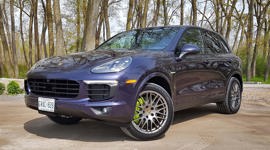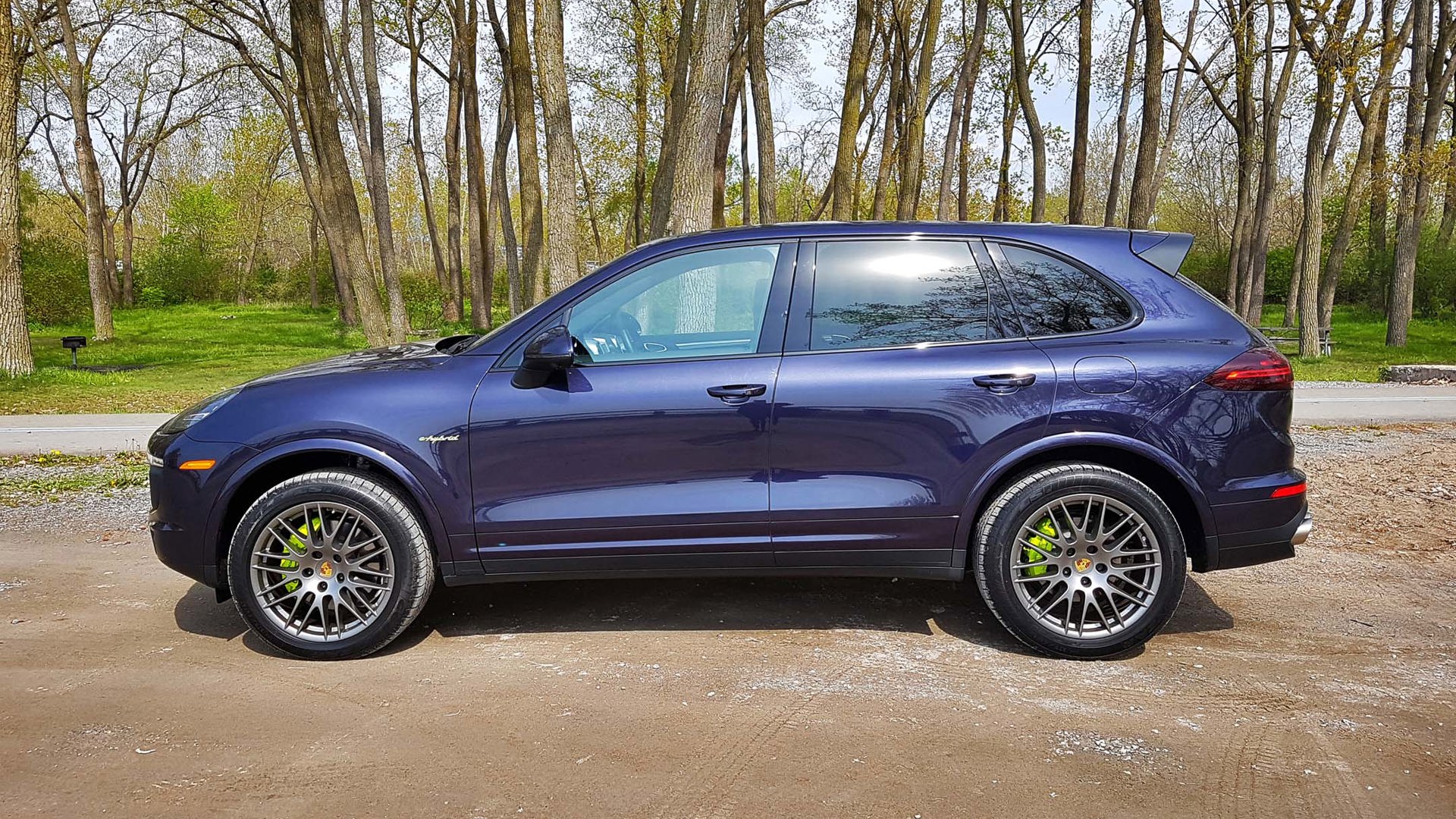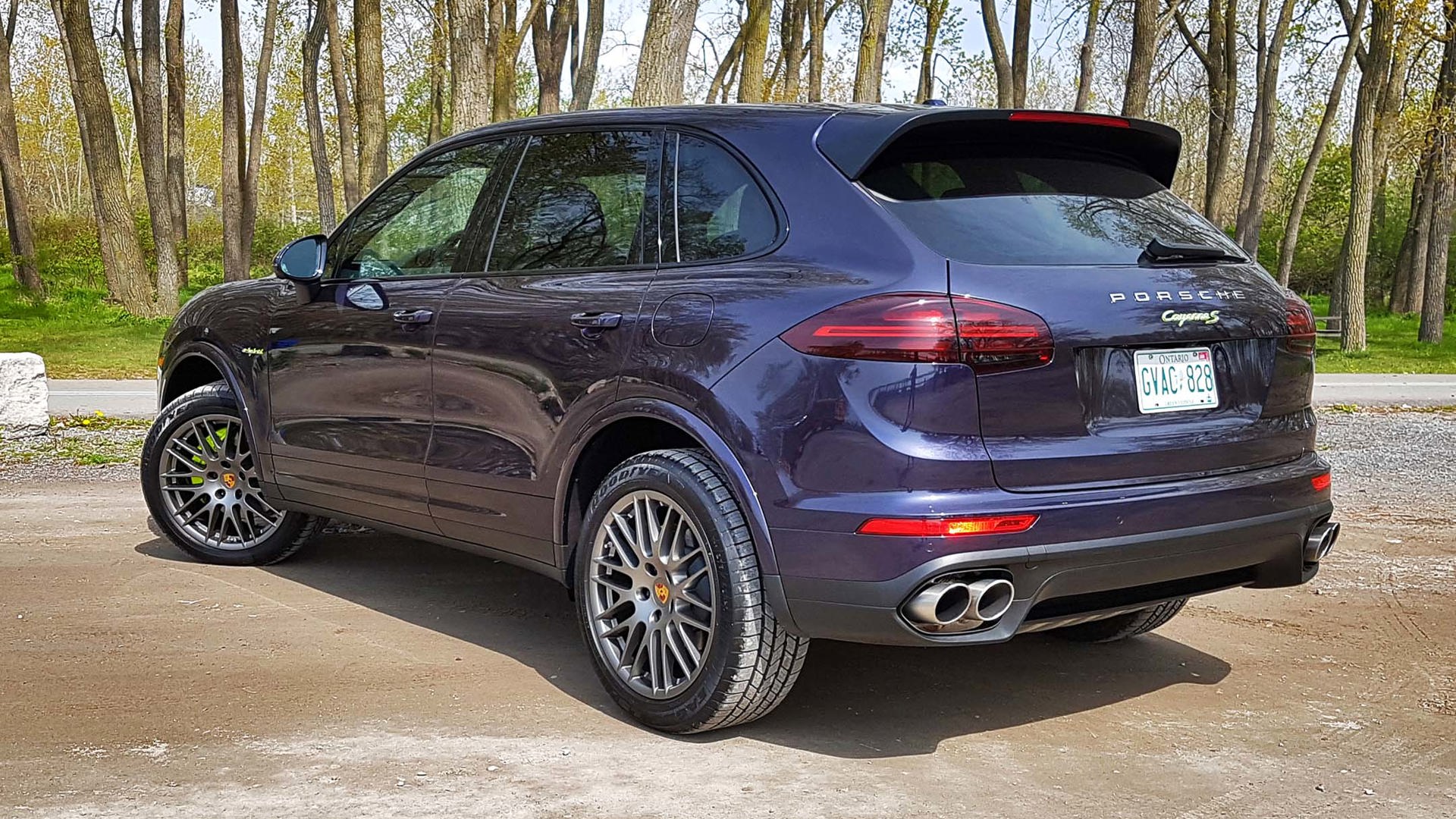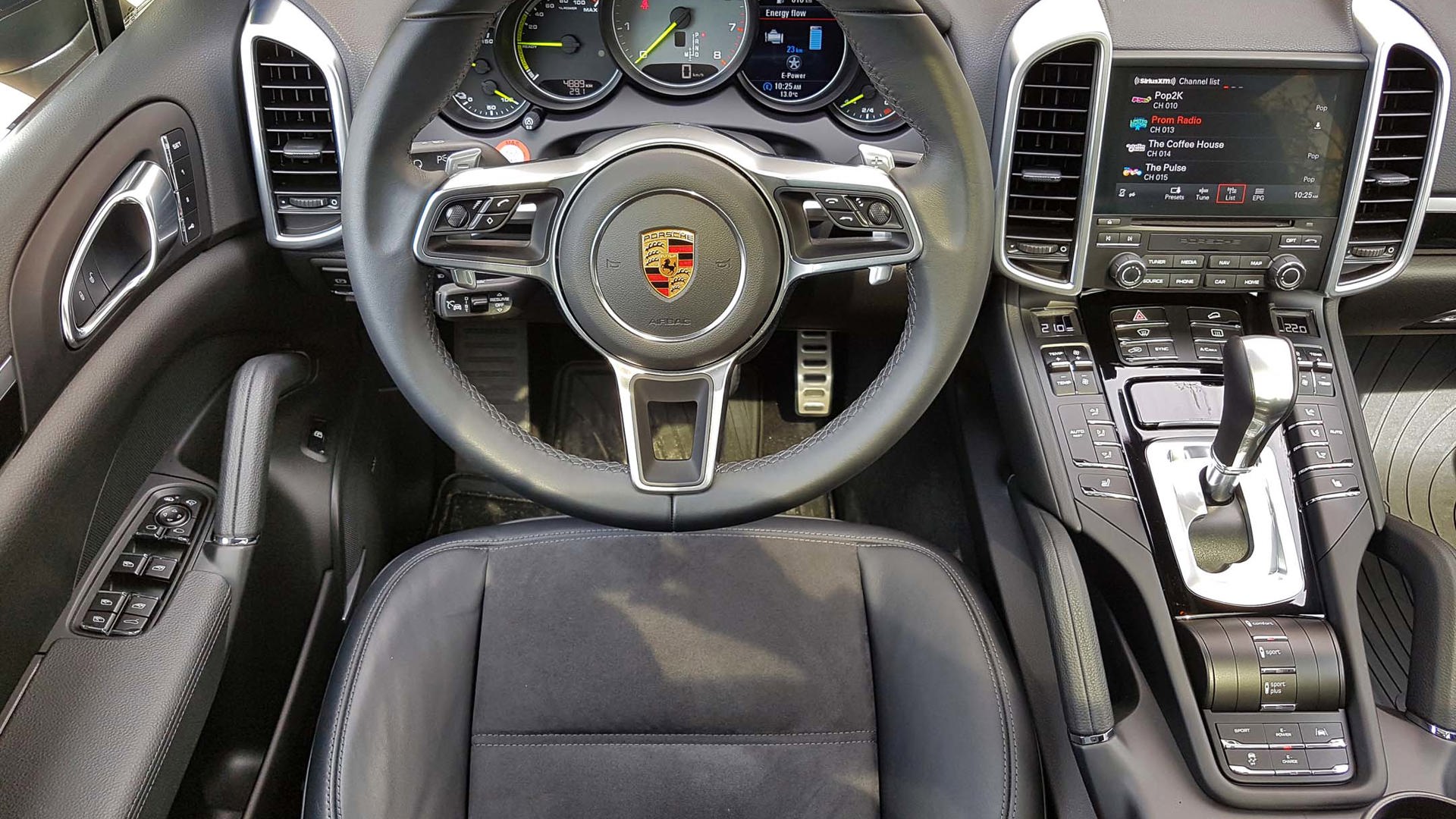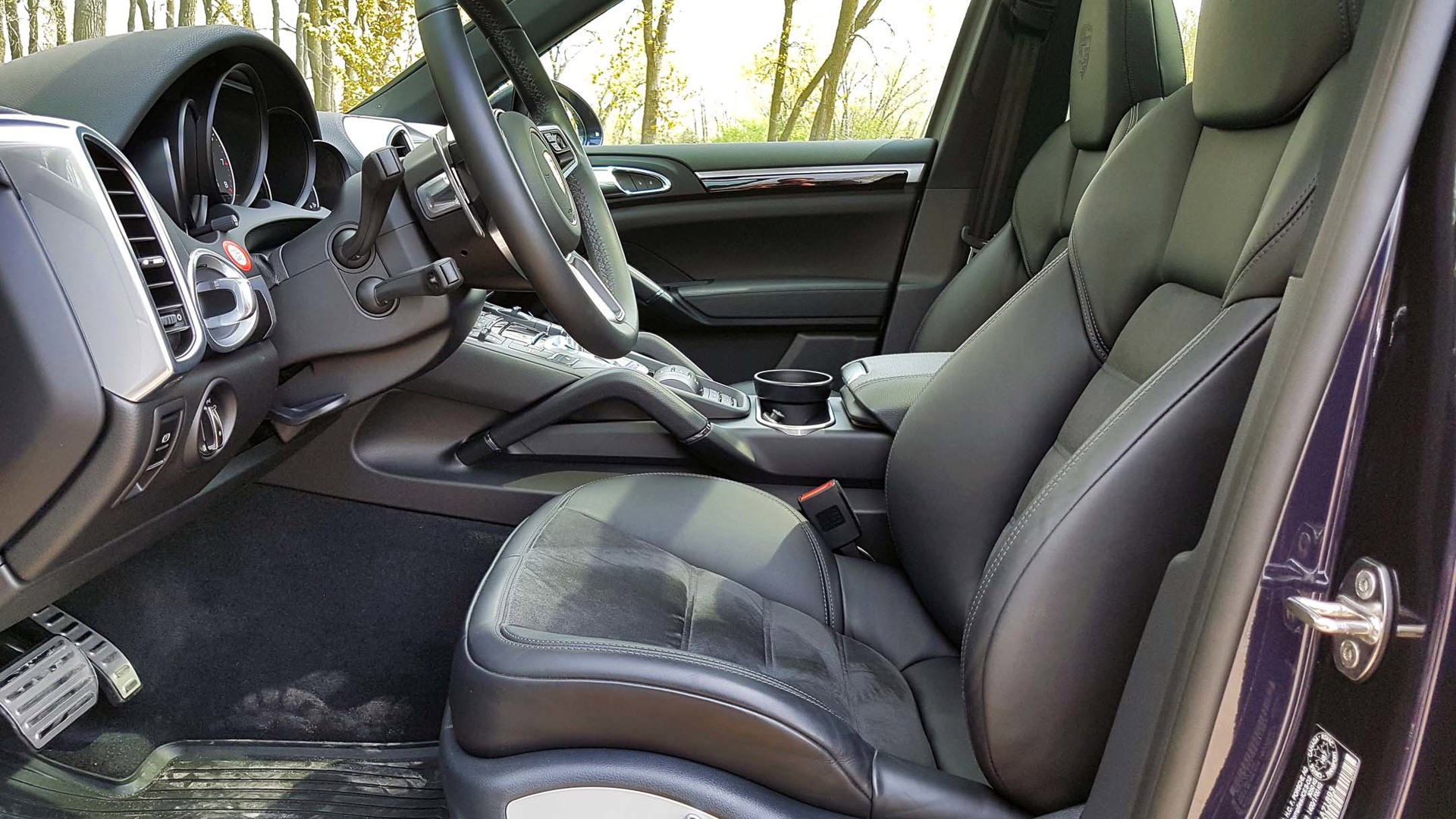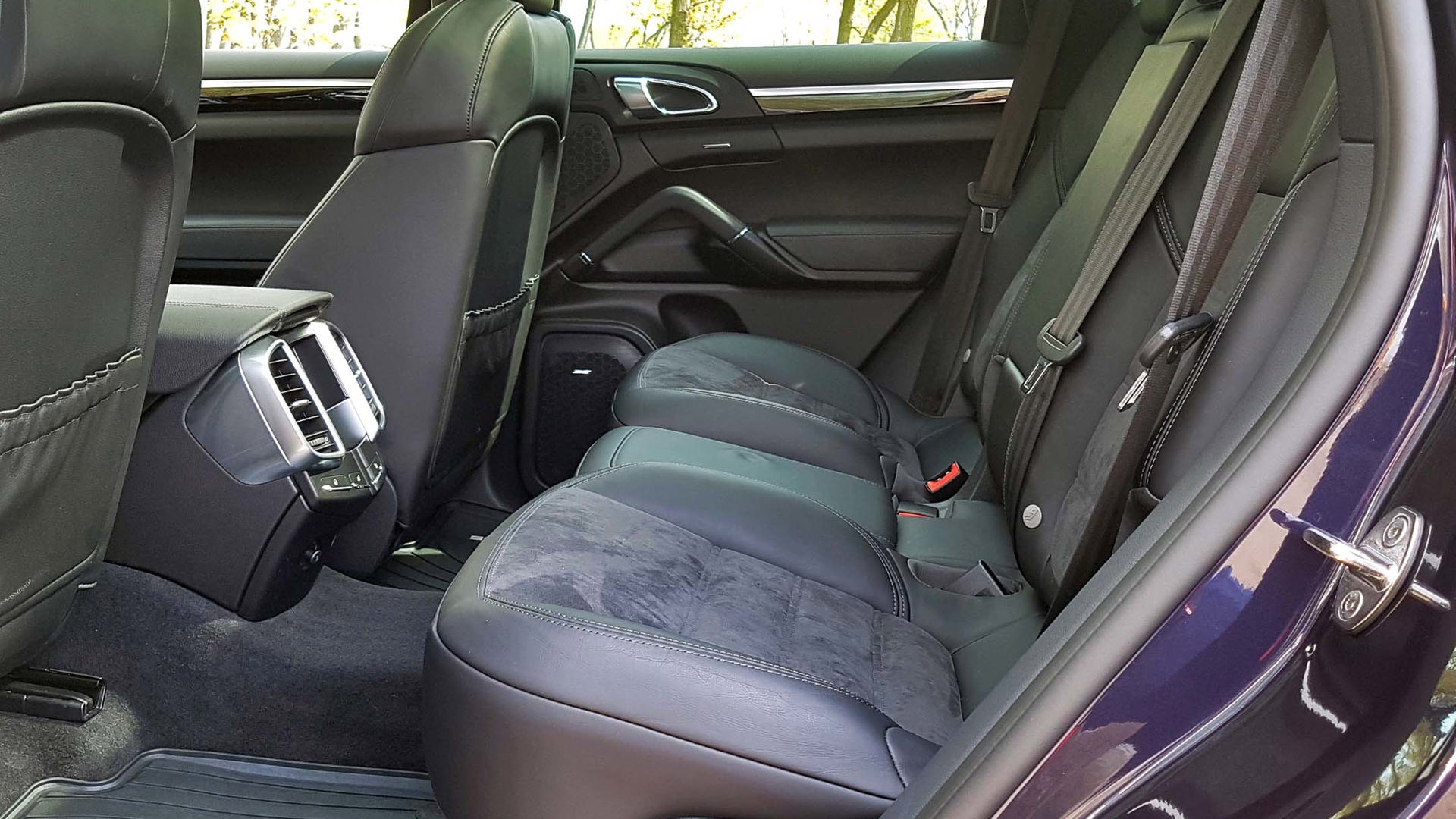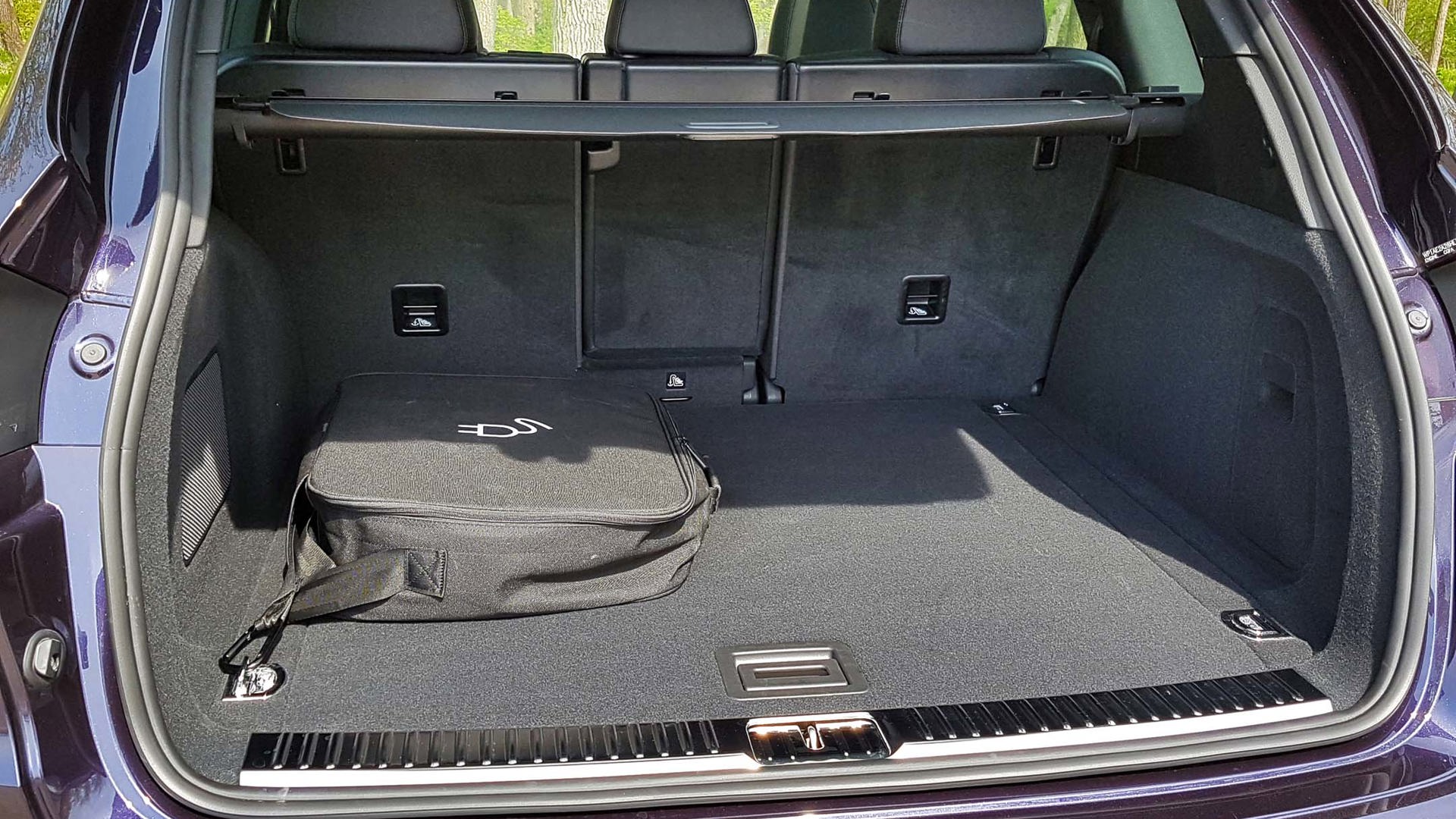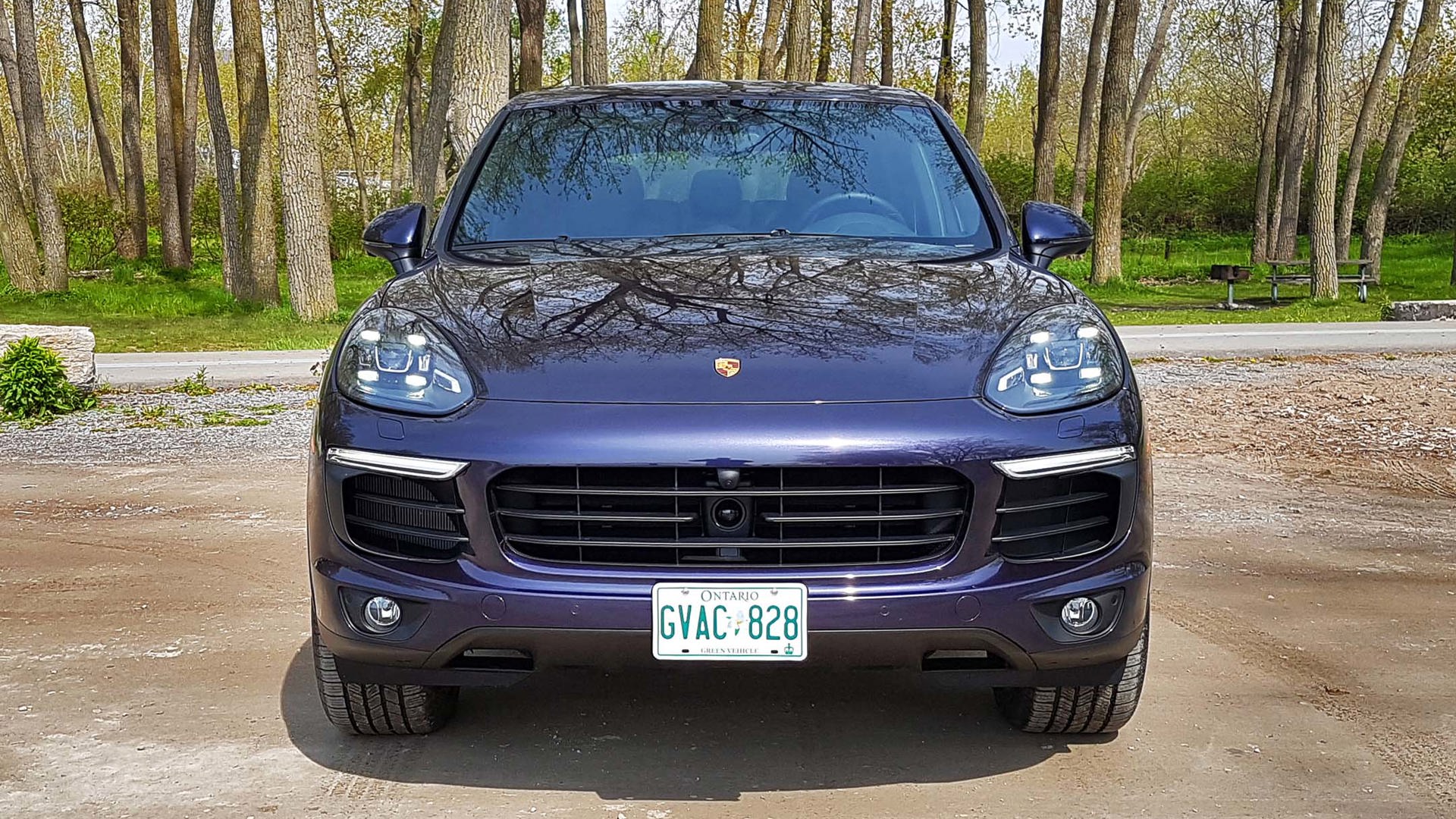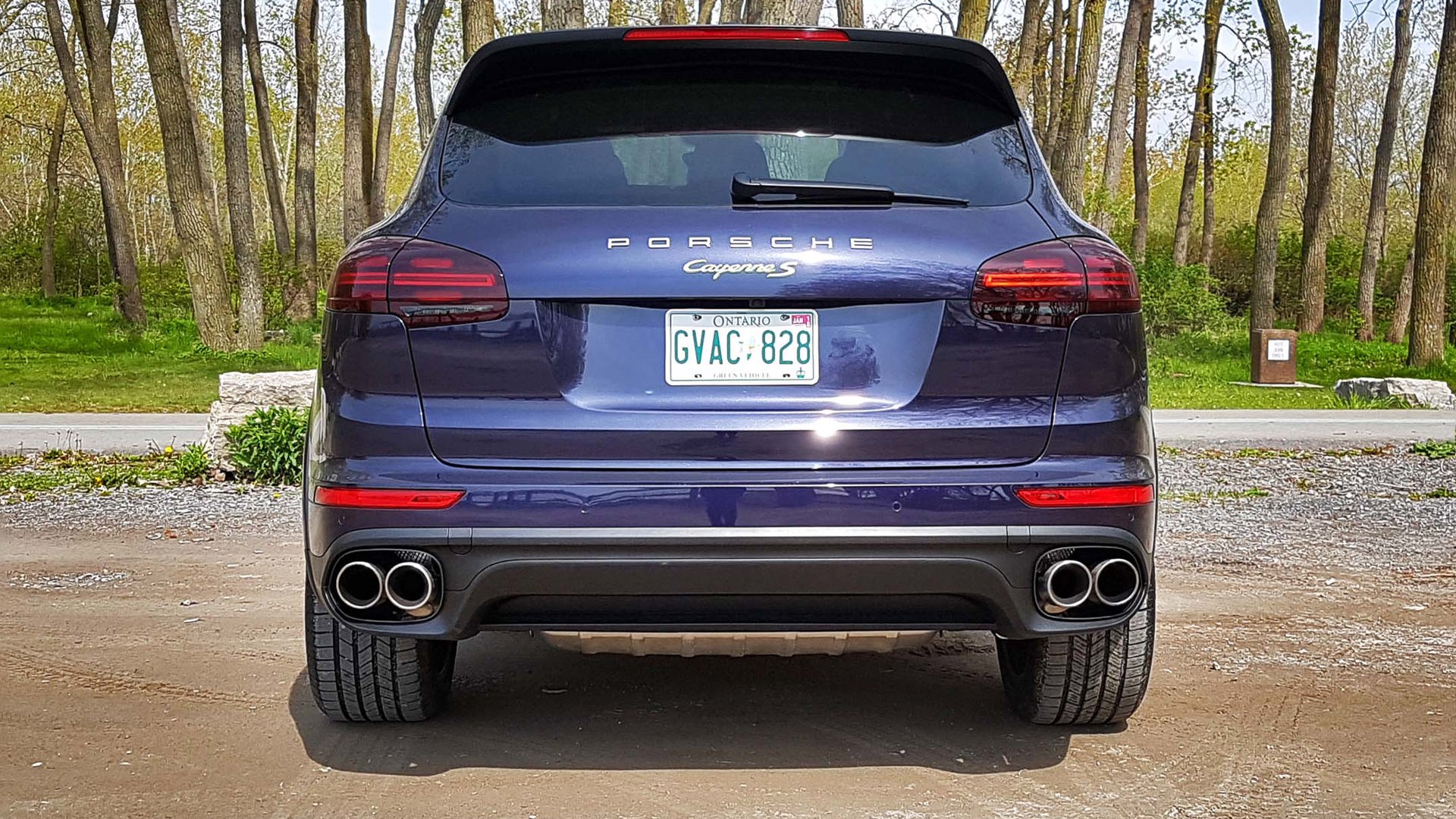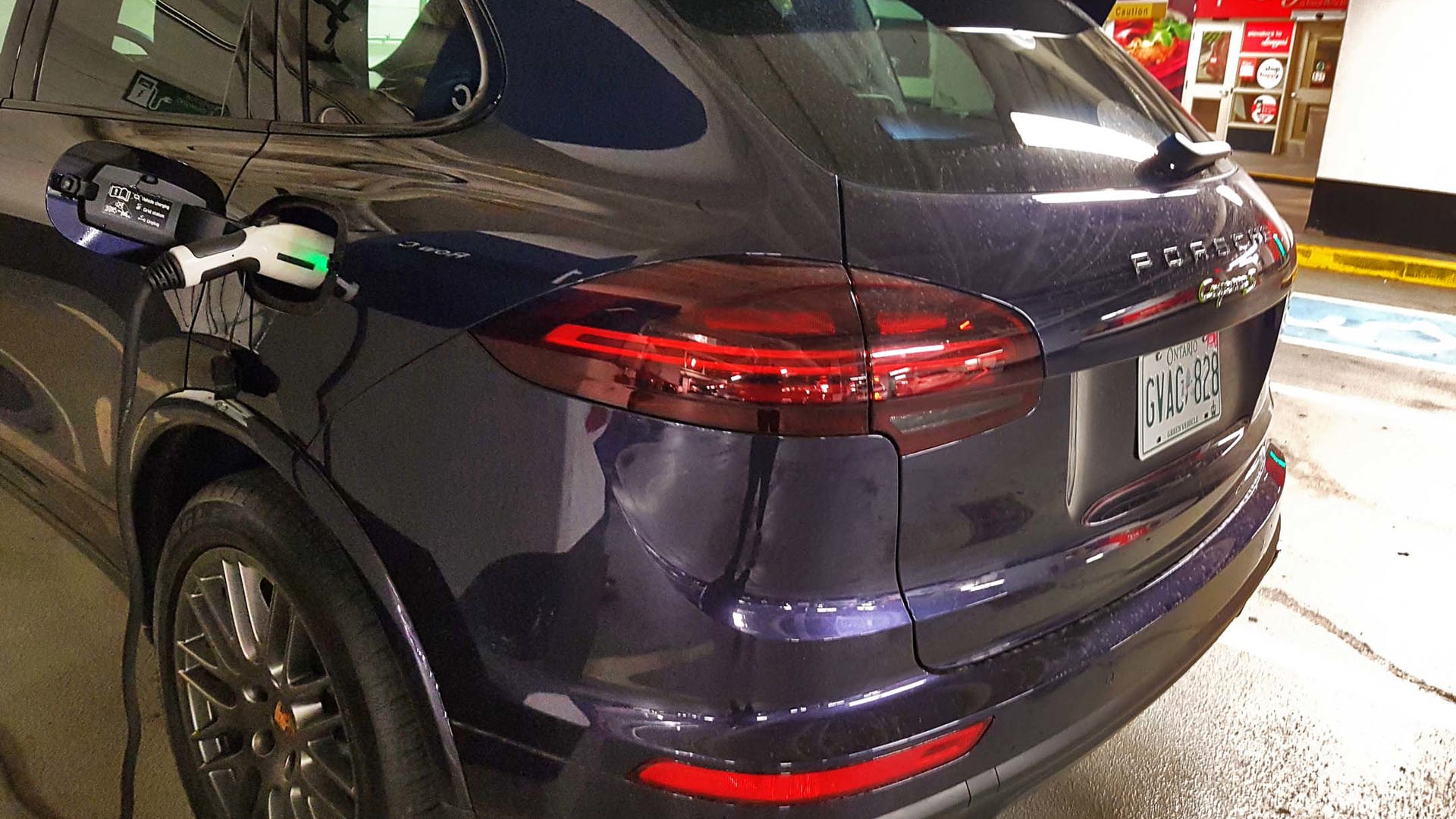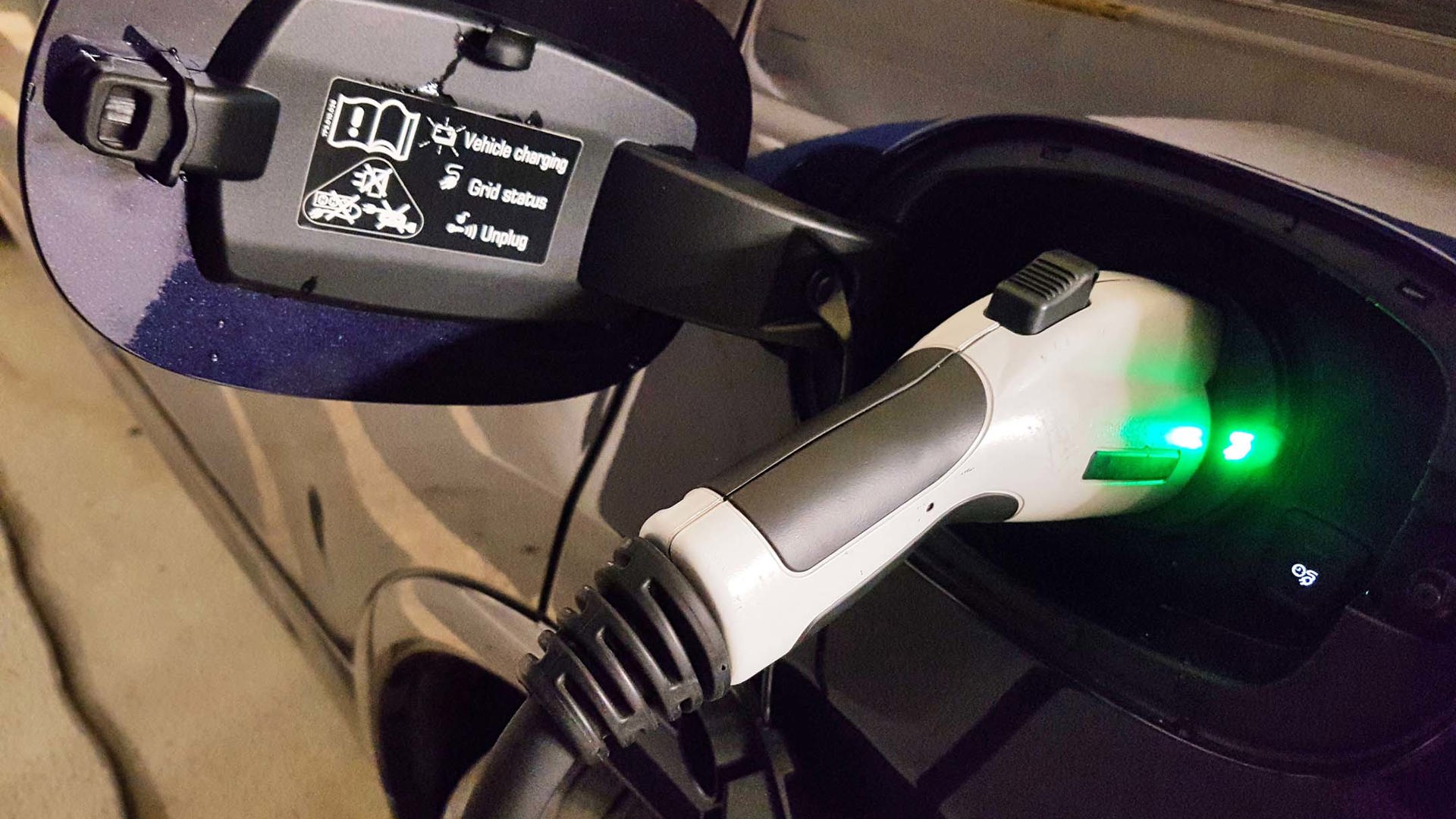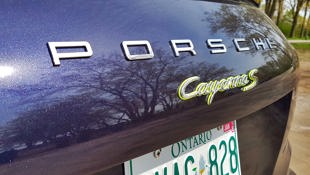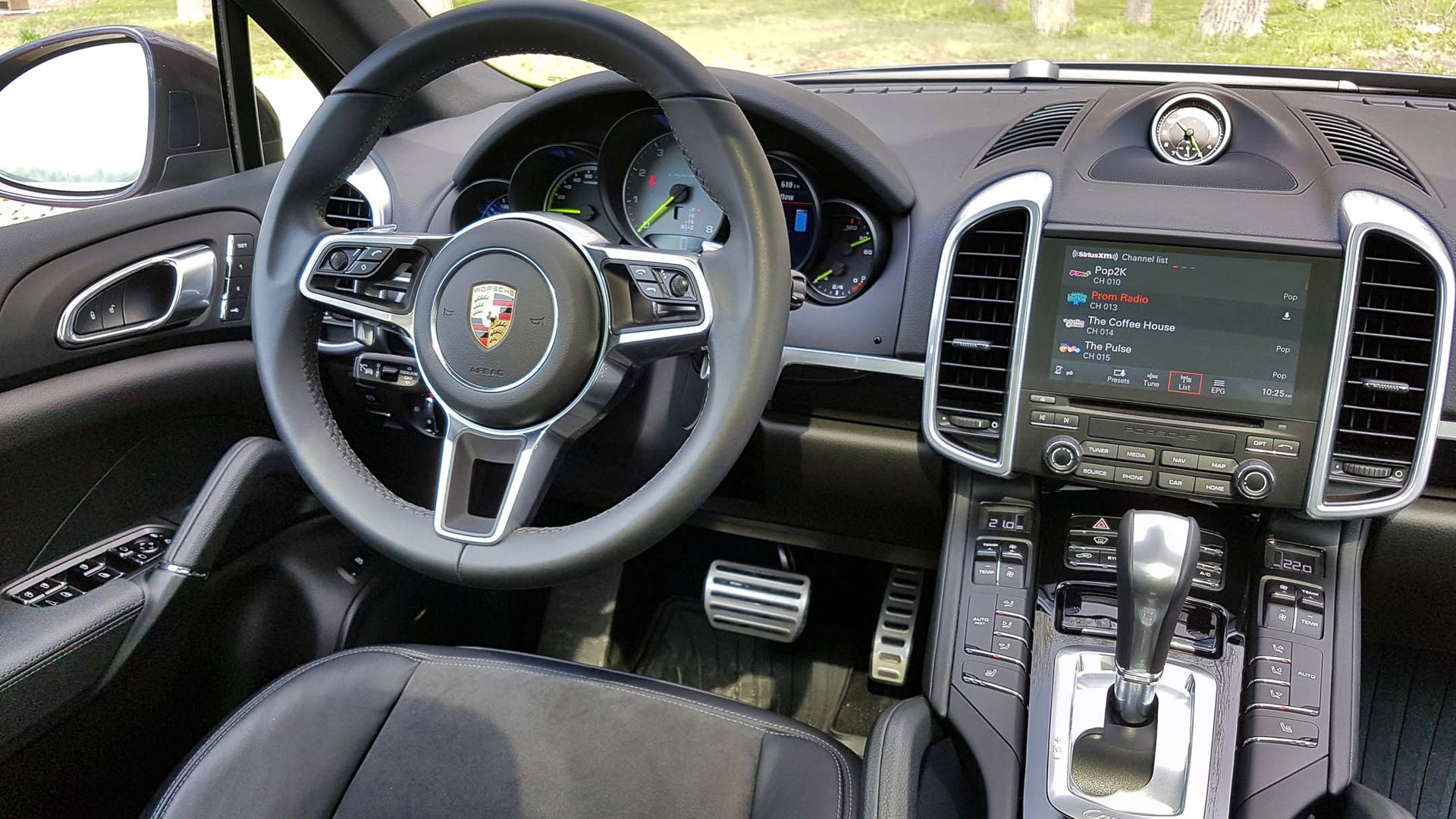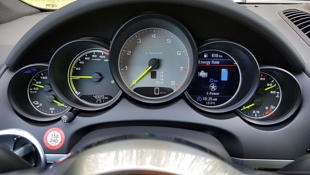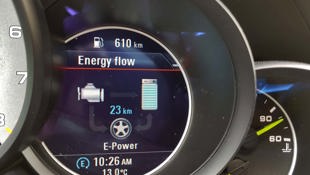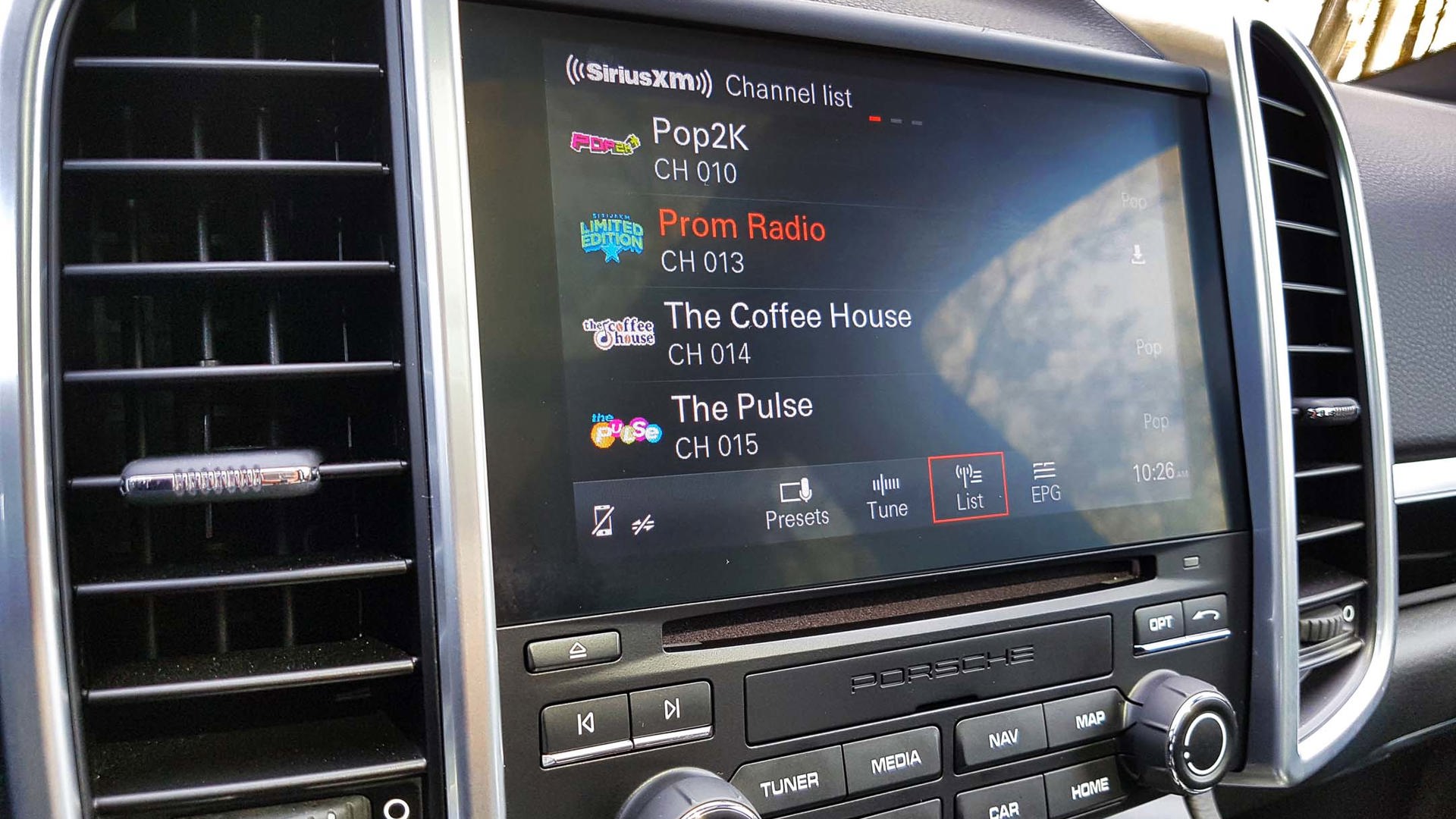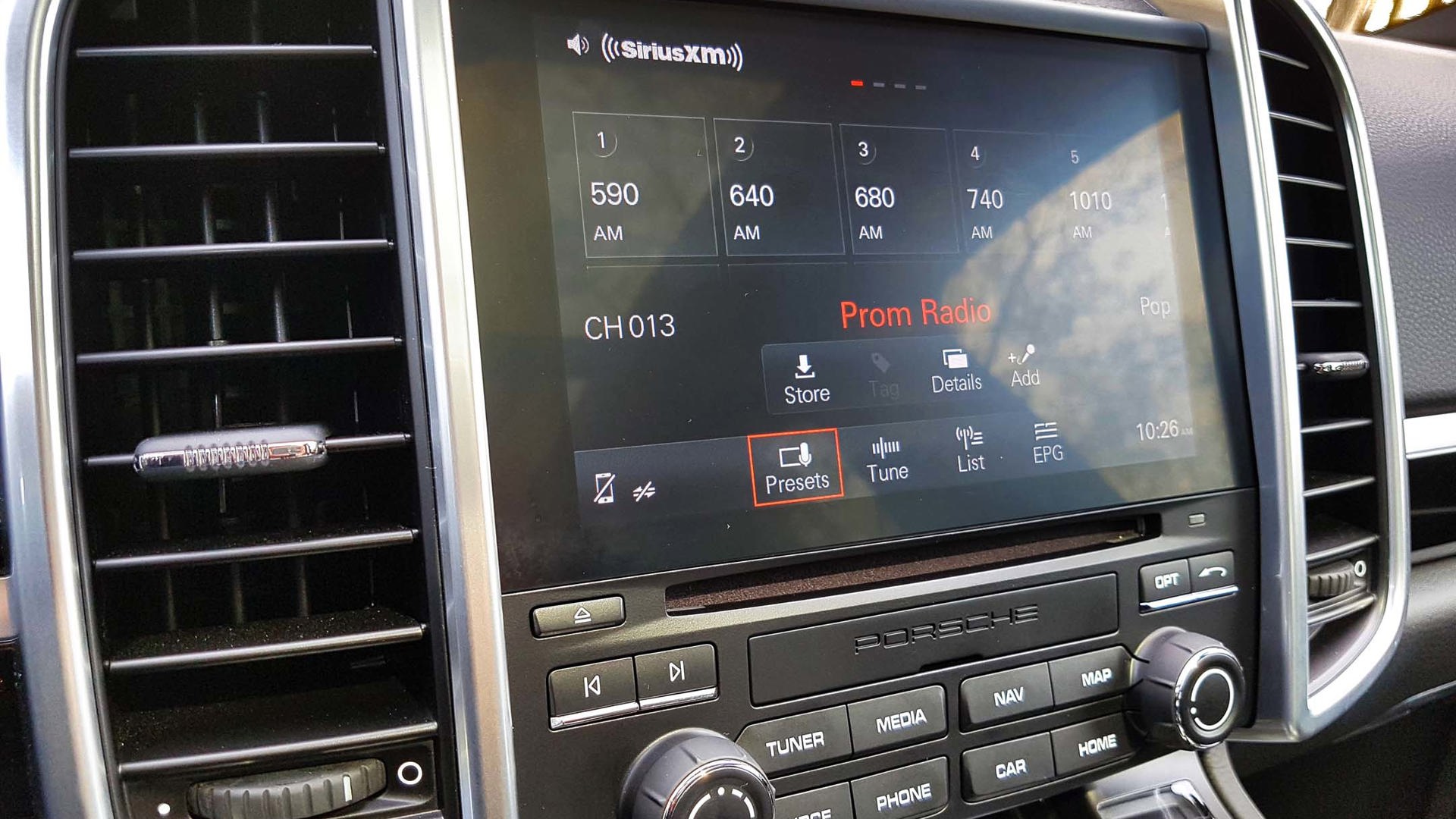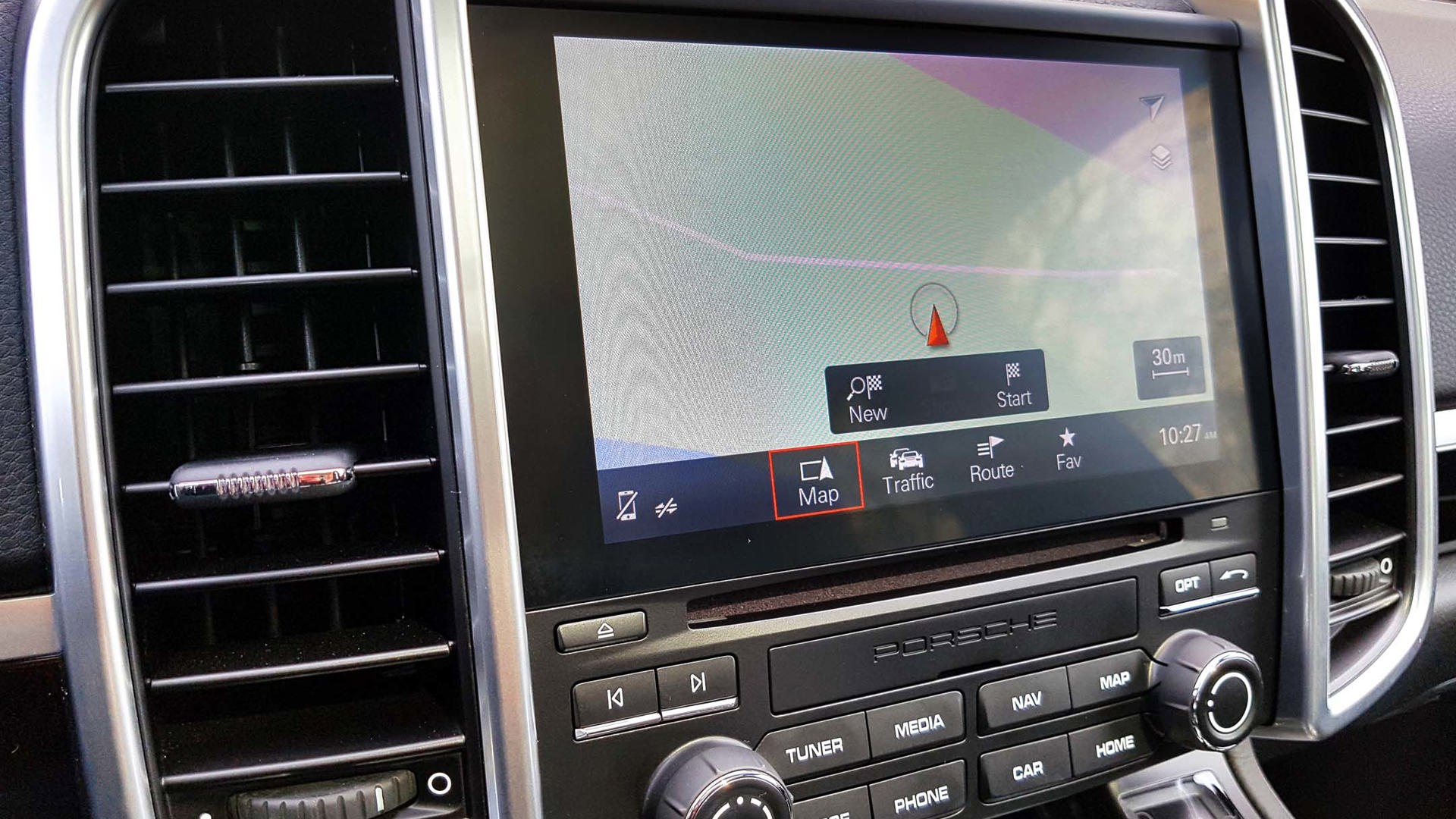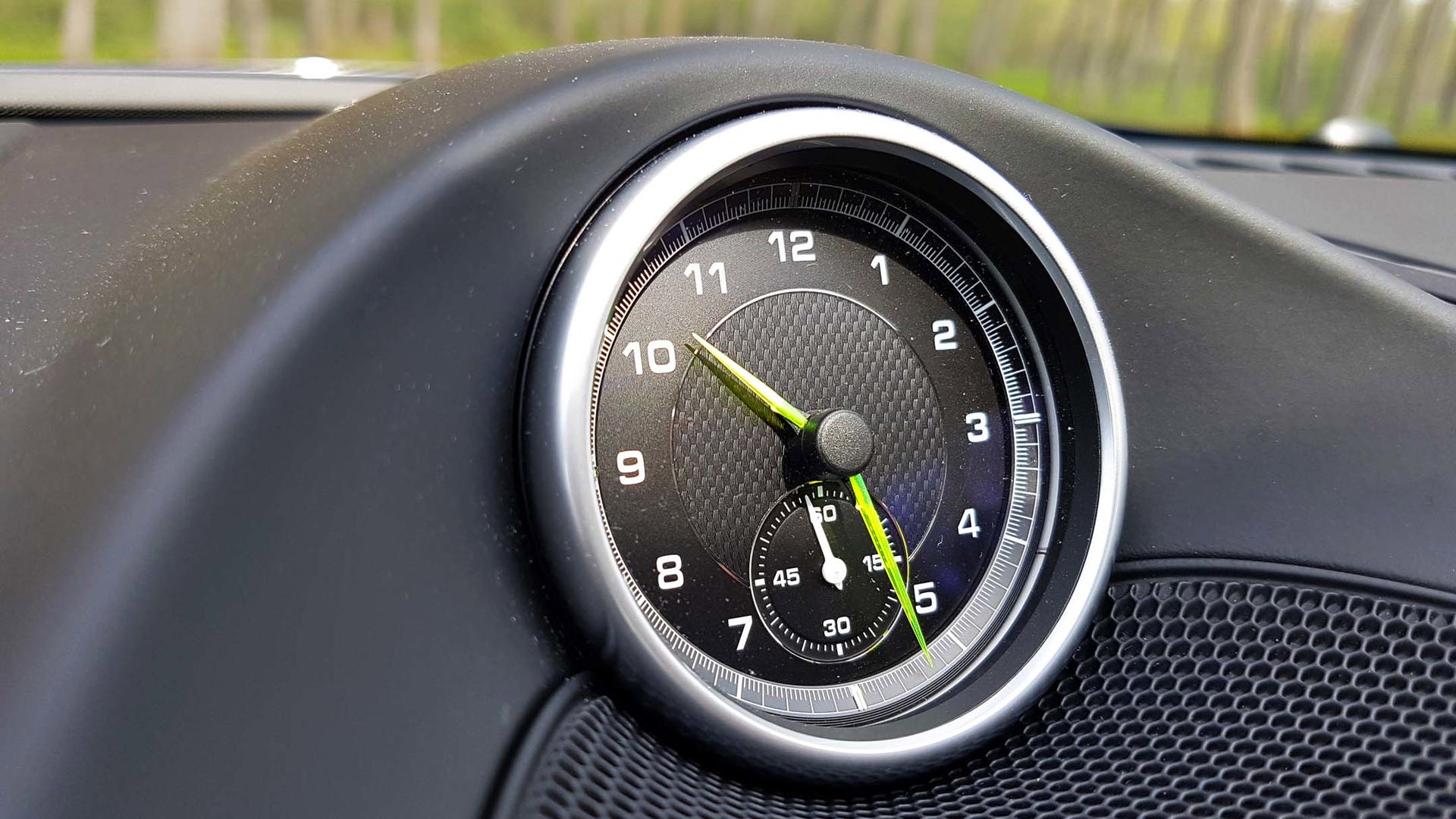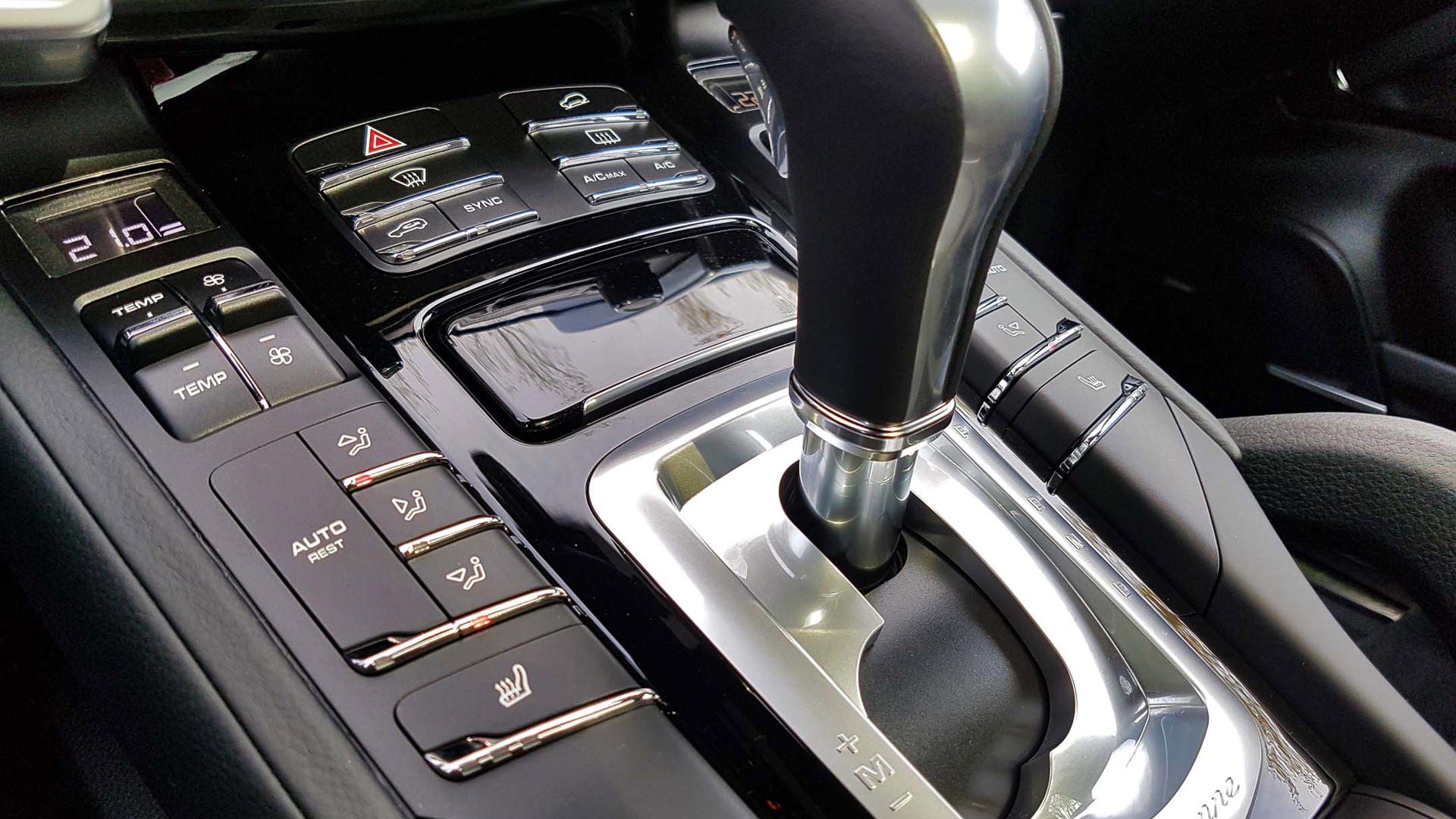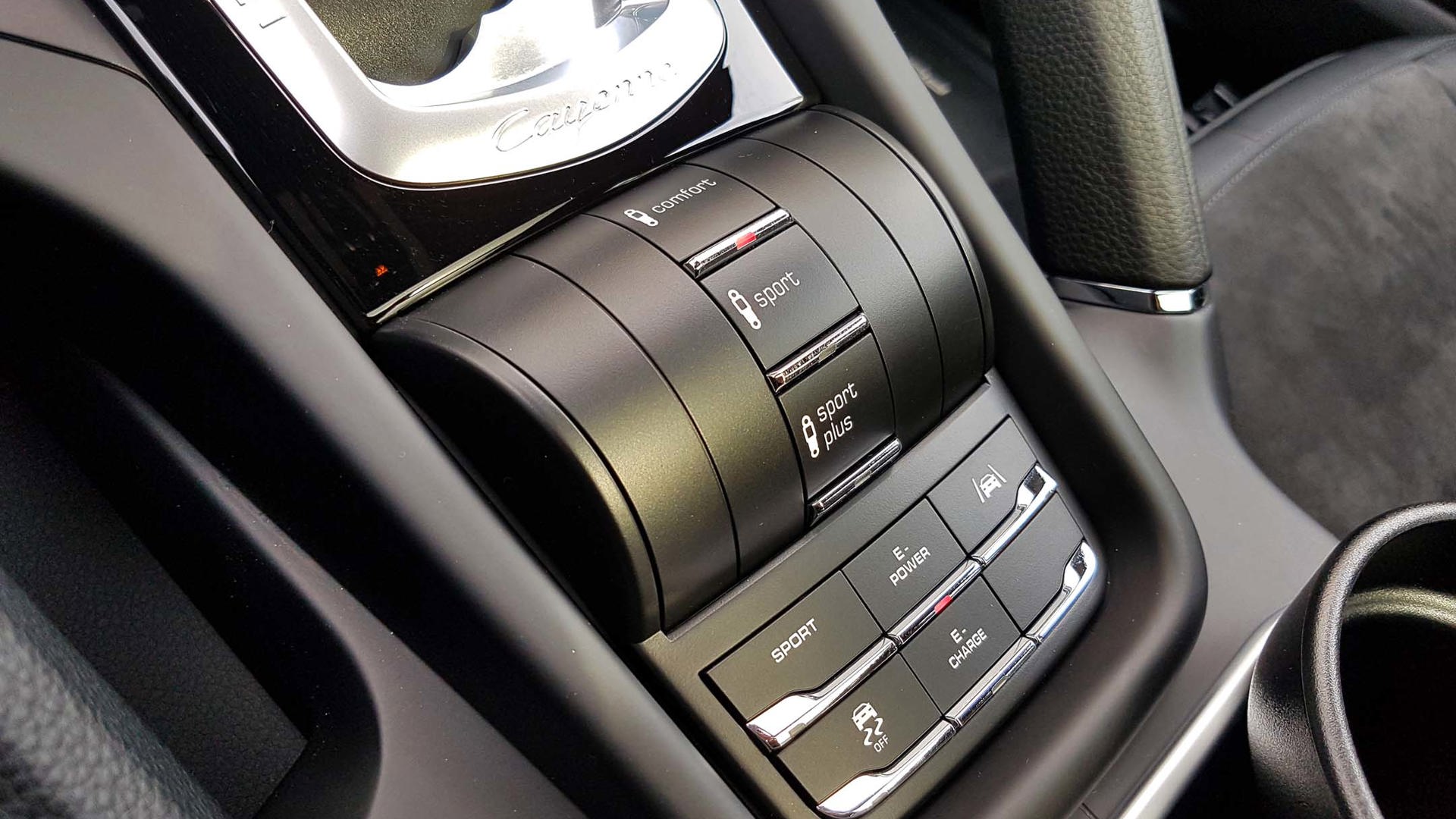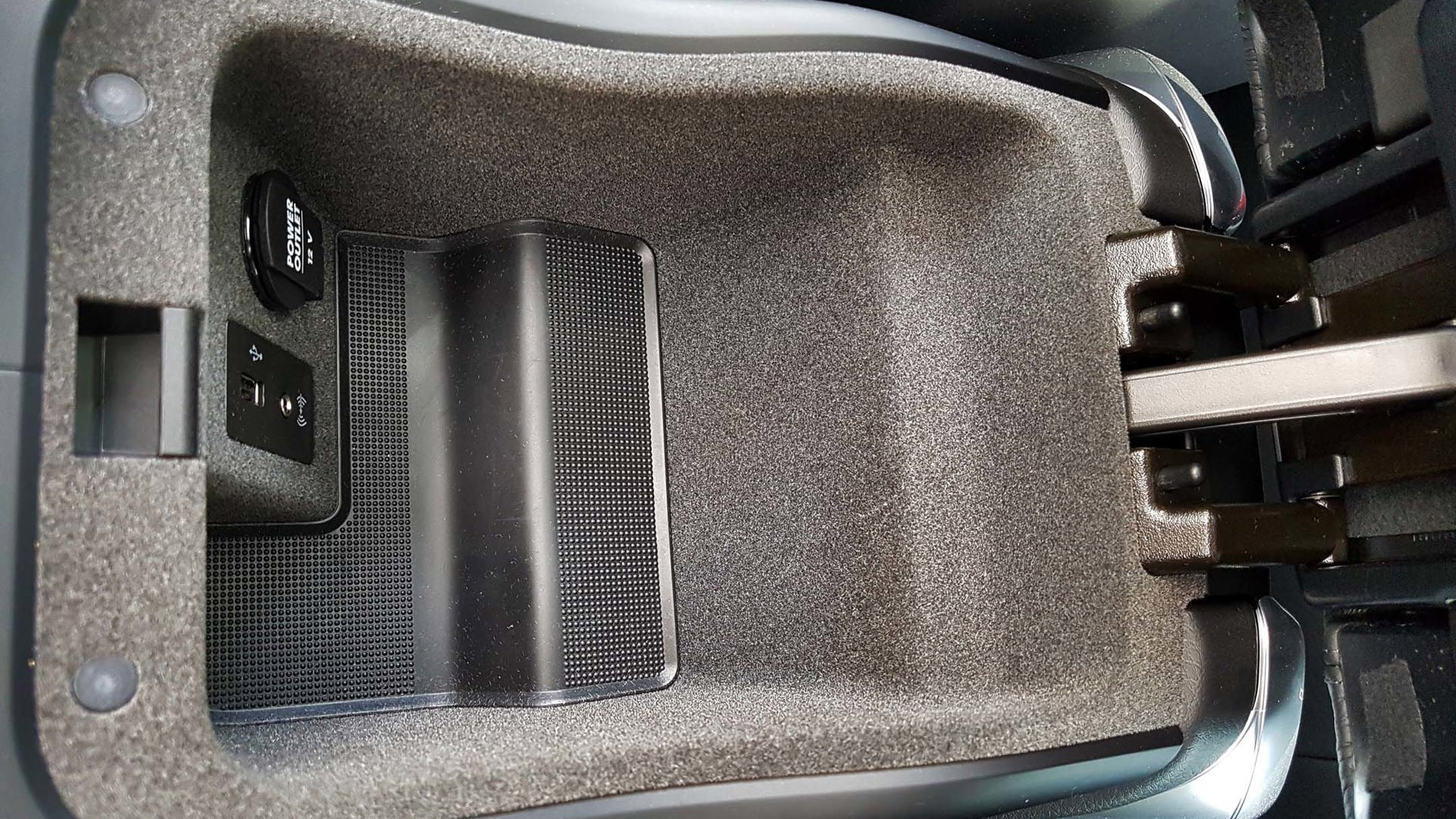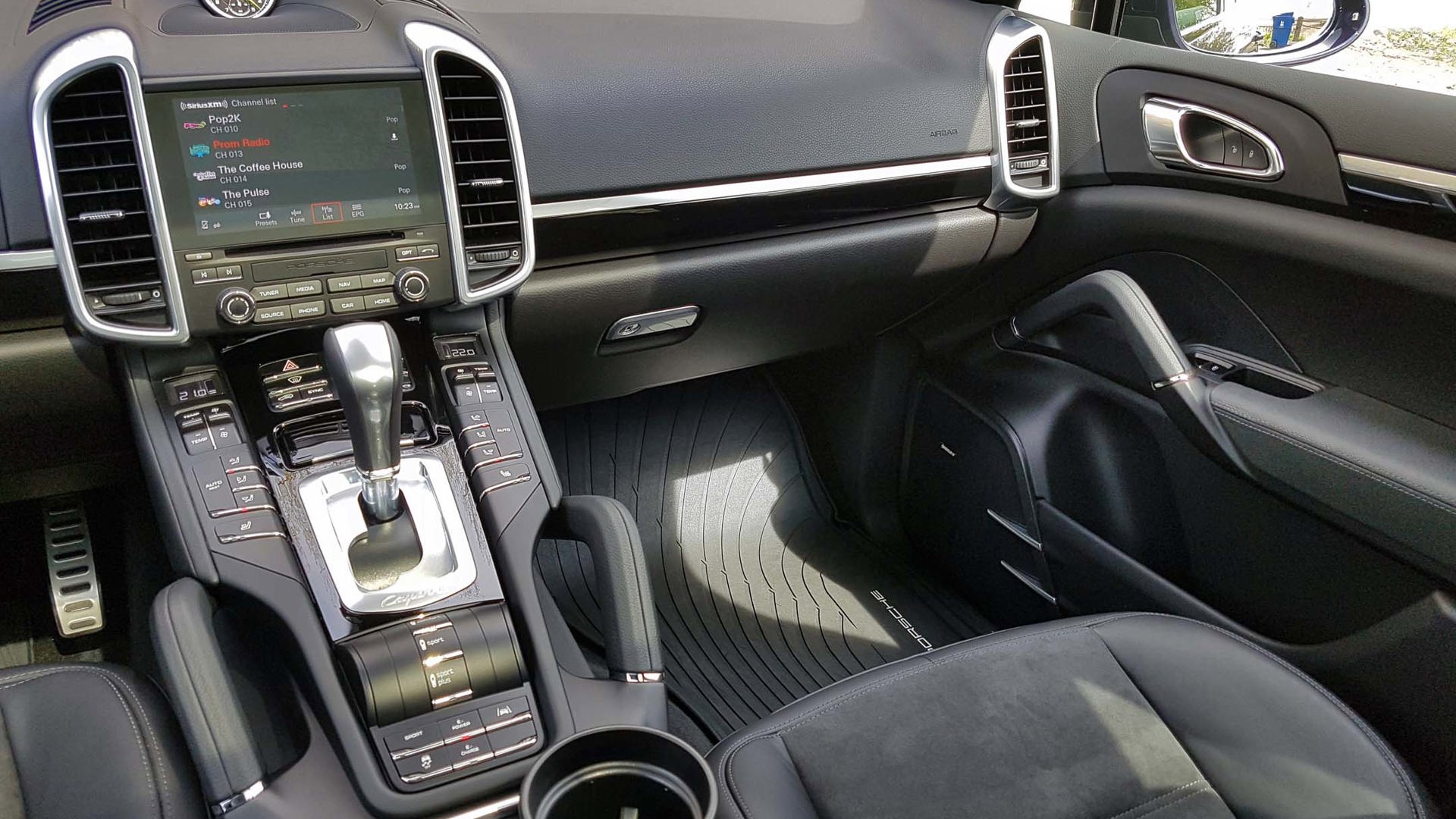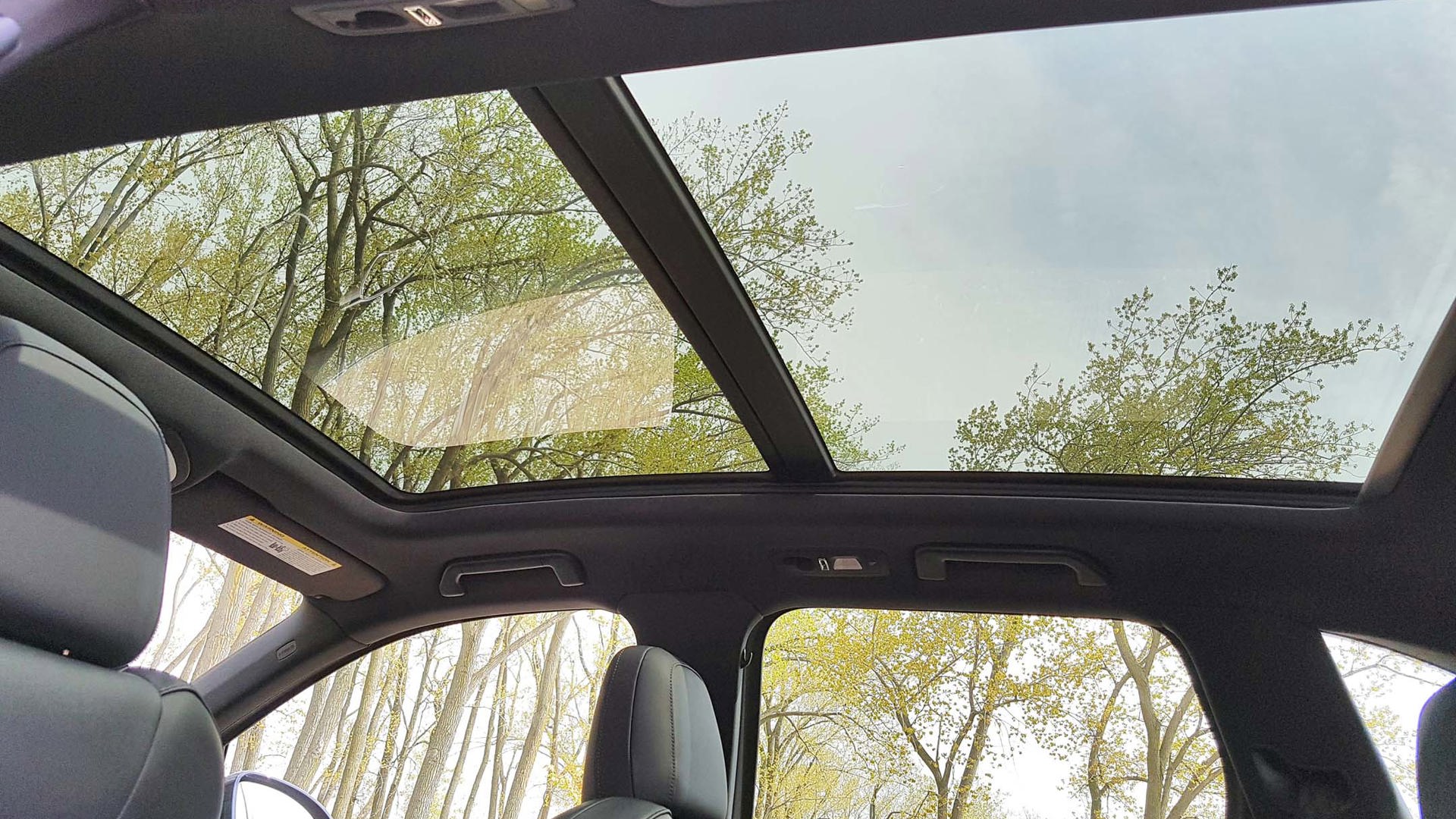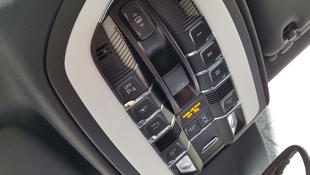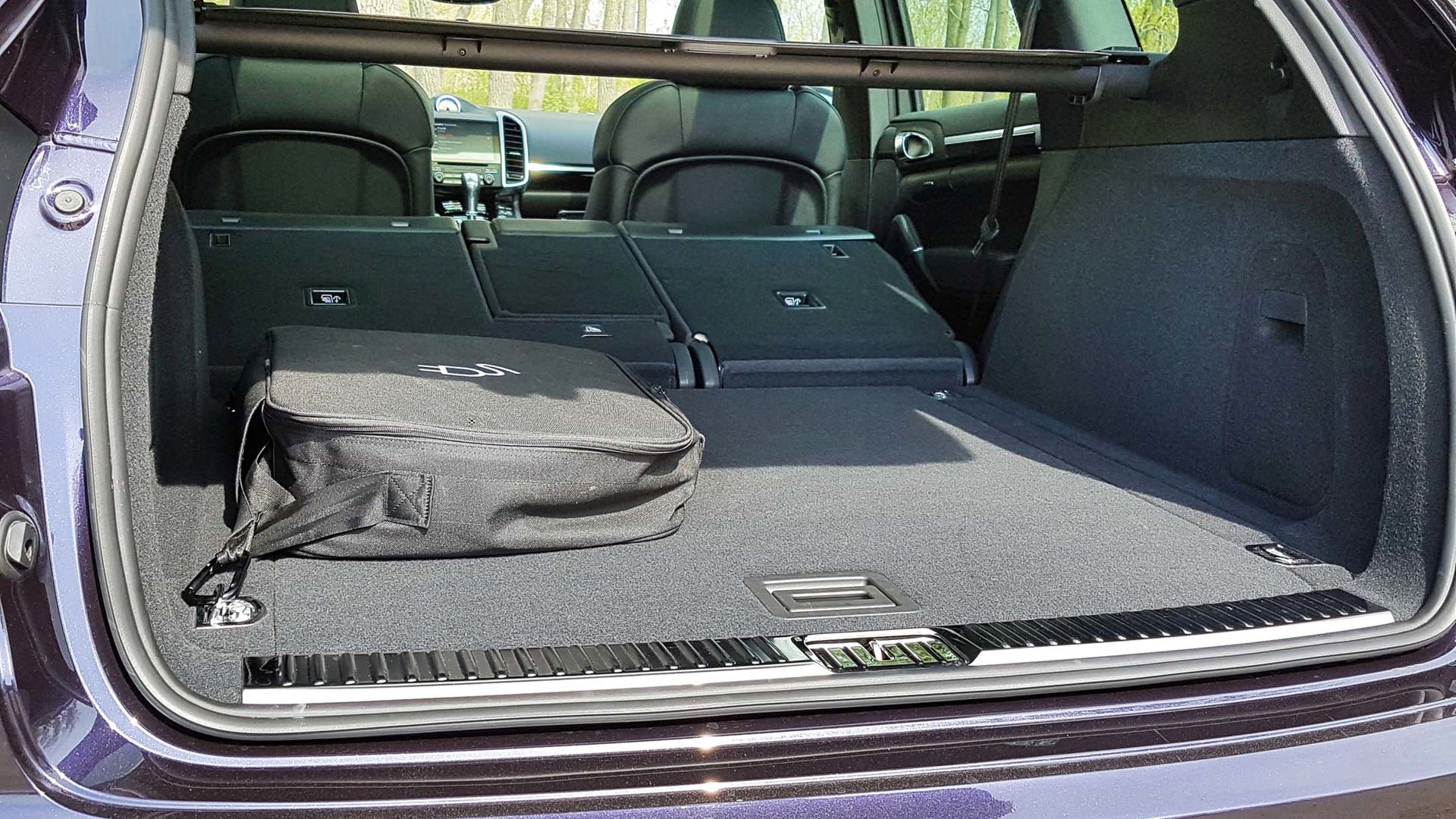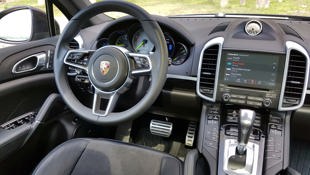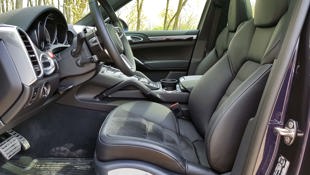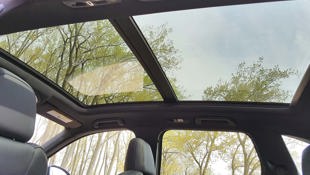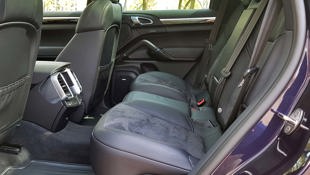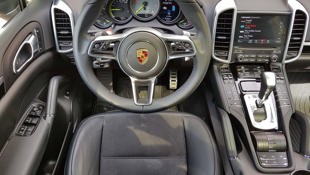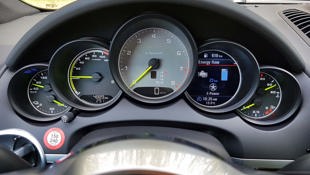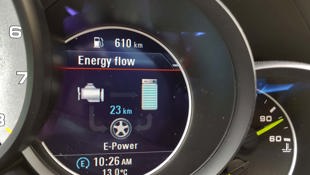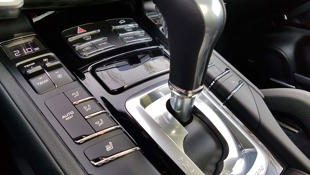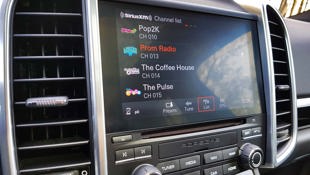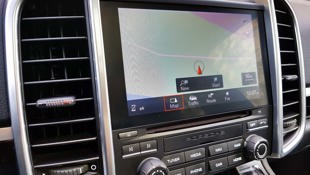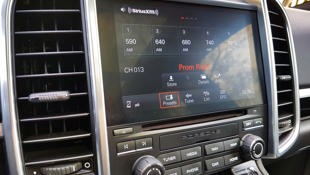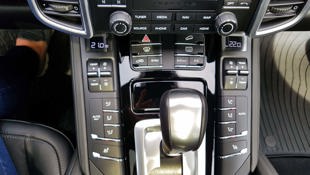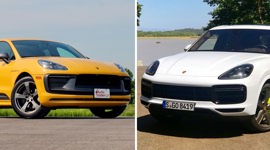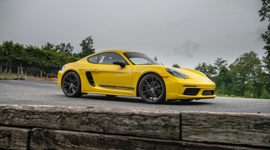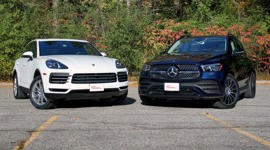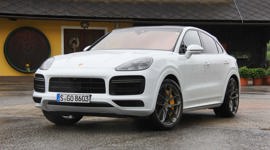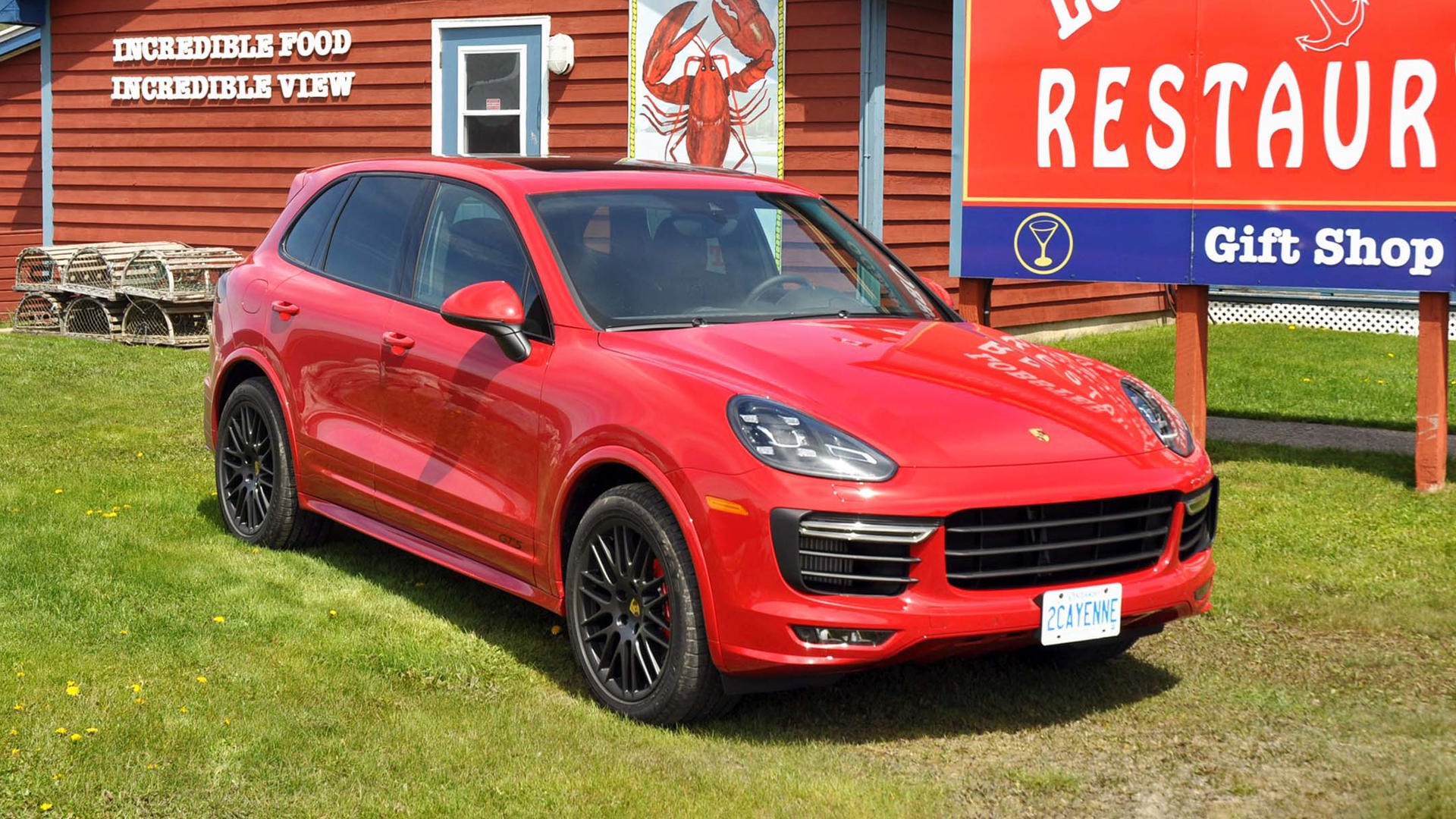 AutoTrader SCORE
AutoTrader SCORE
-
STYLING8/10
-
Safety9/10
-
PRACTICALITY8/10
-
USER-FRIENDLINESS6/10
-
FEATURES7/10
-
POWER8/10
-
COMFORT7/10
-
DRIVING FEEL8/10
-
FUEL ECONOMY9/10
-
VALUE6/10
After not driving a Porsche Cayenne for a couple of years, and being curious about how the second generation is holding up in an increasingly competitive large SUV market, I gave my colleagues at Porsche a call and asked what models they have for test drives.
I don’t have access to a charger at home... could I really give Porsche’s only EV SUV a fair shake over a full week of driving?
There is one available, they told me. But it’s the Cayenne S E-Hybrid.
I had to stop and think for a moment. I live in a downtown Toronto condo complex, which means I don’t have access to a charger at home. I wondered: could I really give Porsche’s only EV SUV a fair shake over a full week of driving?
I decided to give it a go anyway, for a couple of reasons – one of them being that it gives me a perfect opportunity to climb onto my soapbox for a moment.
Demographically speaking, a city’s core-dwellers are the most likely adopters of the electric vehicle movement. Their average trip is shorter than most, and they tend to have a more environmentally conscious lean. I personally know of several people who could afford a vehicle like this and would willingly buy one if they had access to charging infrastructure, but they don’t.
Very few downtown homes are freeholds – instead, the vast majority of them are multi-level condominiums with parking areas of various configurations and condo corporations overseeing them. This adds up to widely varying levels of success in having personal chargers installed, a lesson that a neighbour of ours learned recently: he ordered himself a Tesla and afterward checked with property management on how to prepare his parking space, which to his chagrin resulted in mountains of red tape to be overcome. (His order of procedure was unfortunate, sure, but that’s a different discussion.)
Homes in our complex are run on individual meters that happen to be set up in the parking garage, so he’ll get what he needs eventually – as long as he’s willing to shoulder what might be a hefty installation cost. But very few buildings are arranged that conveniently, and the difficulty in charging electricity use back to individuals results in condo corporations deciding in many cases that it either can’t be done or isn’t worth the effort.
EV support in cities would accelerate much more quickly – and, in the longer term, air quality in city centres would be improved – if city or provincial governments worked out a way to motivate condo corporations to do something about this, either through regulation or incentives. Until this happens, automakers can be regulated into building cars like this one until the end of days, but the people most likely to want them are going to consider them too impractical.
Stepping down from the soapbox now: having said all of that, using a charger to top up the battery in the 2017 Porsche Cayenne S E-Hybrid would obviously help in maximizing electric-only driving time. But is it strictly required to see some benefit? Not necessarily.
Powertrain
The Cayenne S E-Hybrid Platinum comes with a 3.0L supercharged V6 paired with an electric motor. The gas engine delivers 333 hp and 325 lb-ft of torque and the motor puts out 95 hp and 229 lb-ft, making the system’s combined output 416 hp and 435 lb-ft of torque. This is paired with an eight-speed automatic transmission with auto stop-start functionality for added fuel savings, and a 10.8 kWh battery that starts you off with 22 km of fully electric range.
Relatively speaking, no, that’s not a lot these days – especially when you’re running all of the things one tends to enjoy without a second thought in a luxury SUV like the heated seats and steering wheel. But on the other hand, Porsche’s energy recovery system is excellent. It gathers kinetic energy efficiently through its regenerative braking, enough so that a stint in stop-and-go traffic on the highway can get you a good chunk of your charge back by the time you’re back on city streets. There’s also an e-charge mode that uses the combustion engine for recharging, so a long highway run at speed will accomplish the same thing. And the gauges are very informative, letting you easily track when your braking is maximizing regeneration and when you’re not so hard on the throttle that you’ll drop out of electric mode.
This all means that I didn’t actually miss having a charger as much as I expected to. Granted, I ended my week-long test at an average of 10.0 L/100 km, while the literature says that the Cayenne S E-Hybrid is capable of getting as low as 5.0 with effective use of both electric and gasoline power. But, a) I had no home charger, b) I spent nearly all of my driving time on the highway that week, and c) I played with sport mode (which turns EV mode off) along with the various sporty configurations for the air suspension a lot because that’s the other thing about this car: unlike some more familiar hybrids, this one is on standby for some spirited driving when you go looking for it. We’re not talking 911 levels of fun here, but it wasn’t so far off the Cayenne GTS I drove a week later that I looked back and felt sad about it.
There is one major difference between this and the rest of the line-up, though in the age of automatic transmissions it really comes down to comfort more than performance: the brake pedal is mounted noticeably higher relative to the throttle in the E-Hybrid than in other Cayennes to accommodate the regenerative braking system, which started giving me leg cramps after a couple of hours on the highway. Though it’s understandable and is probably something I’d let go in most other vehicles, I was surprised to encounter such a deep pedal stagger in a Porsche. When you’re not going to be doing any heel-toe shifting, though, this is merely something to watch for and gauge your own preference on if you take one for a test drive yourself.
Design
Overall, there’s not a whole lot that’s different in the Cayenne S E-Hybrid Platinum than in other Cayennes: the acid-green accents on the badging and the Brembo brake calipers are about the extent of it. This is a good thing. Though some of the first-generation Cayennes that are still kicking around are starting to look dated, the second generation’s styling has endured and still fits in well beside the more recently redesigned competitors waiting with you in the school drop-off line. And unlike some green innovators, this car also fits in seamlessly when lined up against its badgemates and with other conventionally powered cars. It strikes a good compromise.
Inside, though – and along with other Cayenne models – there’s potential for improvement. Though the optional panoramic roof is huge, the fit and finish are gorgeous, and the standard seats are very comfortable, ingress and egress is tight in both the front and back rows (especially if you have short limbs like I do – I had to take the time to physically move my seat back to get in and out). Rearward visibility also isn’t this car’s forte; a larger rear window and rear-view mirror would be welcome.
The centre stack houses a lot of buttons, and I found it difficult to navigate at times. You may find you need to wait for a stoplight to find the function you’re looking for if you don’t have a passenger to do it for you. I find the centre stack layout in the new Panamera to be an enormous improvement, and that’s bound to make its way into the Cayenne eventually. Some people may find it worth holding out for if an impending purchase isn’t urgent.
Connectivity
To my mind, this is the Cayenne’s greatest weakness. The current infotainment system’s screen is crisp and quick to respond, but the layout is fiddly – flipping between radio stations one at a time requires you to be on one screen, while the song title and artist information are only available on another. At times the navigation couldn’t find some common points of interest I searched for within a popular tourist area in Southern Ontario.
Apple CarPlay is reportedly now available in 2017 Cayenne models, though I wasn’t able to test that myself as no one in my household owns an iPhone; Android Auto, unfortunately, is not present.
Safety
The Cayenne S E-Hybrid Platinum is light on safety features in its standard equipment: front and rear parking assist and a rain-sensing windshield are about the extent of it. A few additional options round it out nicely, albeit at an extra cost. This tester had add-ons for lane-change assist and lane-departure warning, surround-view cameras, dynamic LED headlights, and adaptive cruise control.
The Verdict
Are you likely to save enough fuel over the life of a Cayenne S E-Hybrid Platinum to make up the cost of choosing it over the gasoline-only S Platinum? Probably not. But ownership does deliver a few perks: making use of the charging station at my favourite grocery store gave me rights to the best parking spot in the lot, and I got far too much of a kick out of being in the HOV lane on the highway by myself.
All told, if you’re looking for a premium vehicle that’s a pleasure to drive and you can get on board with making small steps toward a bigger impact – and connectivity isn’t your highest priority – the Cayenne S E-Hybrid Platinum is a good bet.
| Engine Displacement | 3.0L |
|---|---|
| Engine Cylinders | 6 |
| Peak Horsepower | 416 hp |
| Peak Torque | 435 lb-ft |
| Fuel Economy | 5.1 Le/100 km cmb |
| Cargo Space | 580 L |
| Model Tested | 2017 Porsche Cayenne S E-Hybrid Platinum |
| Base Price | $92,100 |
| A/C Tax | $100 |
| Destination Fee | $1,200 |
| Price as Tested | $111,300 |
|
Optional Equipment
$17,900 – Purpurit Metallic paint $3,590; panoramic roof system $2,120; heated rear seats $600; keyless entry and drive $1,020; lane departure warning and lane change assist $1,760; park assist with surround view $1,720; LED dynamic headlights $2,370; tinted LED taillights with adaptive brake lights $750; adaptive cruise control $2,630; on-board 7.2 kW charger $960; comfort lighting package $380
|
|
